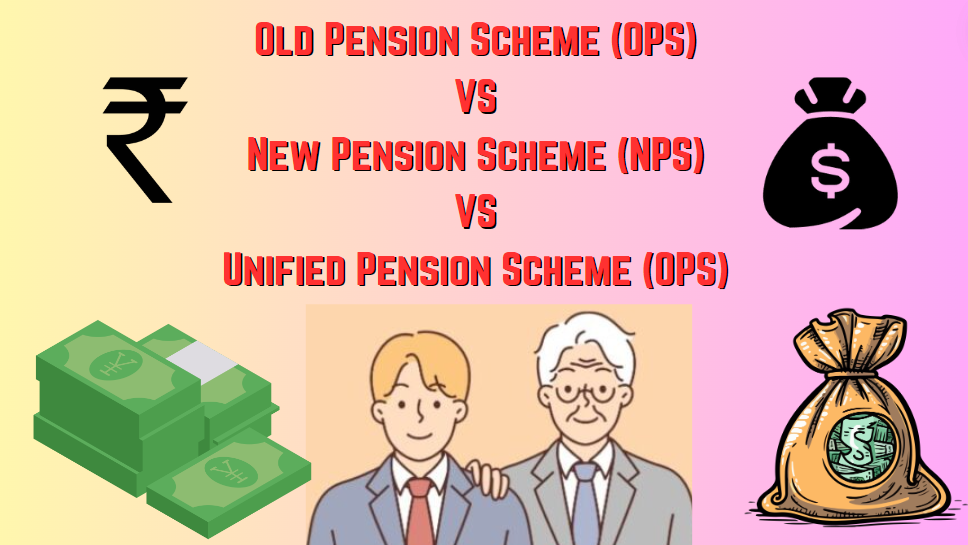Unified Pension Scheme (UPS): How It Compares with NPS and OPS

Unified Pension Scheme: A Detailed Comparison with NPS and OPS
The Unified Pension Scheme (UPS) is set to be a game-changer for Central government employees when it comes into effect on April 1, 2025. Promising a pension equivalent to 50% of the average basic pay drawn over the last 12 months before retirement, the UPS introduces several significant changes to the pension landscape. Here’s how the UPS stacks up against the National Pension Scheme (NPS) and the Old Pension Scheme (OPS).
Key Features of the Unified Pension Scheme (UPS)
Introduced by the Narendra Modi government on August 24, 2024, the UPS is aimed at enhancing the financial security of Central government employees. Under the UPS, the government’s contribution will increase to 18.5%, up from the current 14%. This change is expected to boost pension payments by 19% for employees starting with a salary of ₹50,000, according to projections by UTI Pension Fund.
Comparing UPS with NPS and OPS
- Government Contribution:
Under the NPS, the government contributes 14% of the employee’s basic pay, while the employee contributes 10%. In contrast, the UPS increases the government’s contribution to 18.5%, while employees continue to contribute 10% of their basic pay and Dearness Allowance (DA). The OPS, however, provided a defined benefit pension without requiring employee contributions. - Pension Calculation:
The UPS guarantees a pension of 50% of the average basic pay drawn during the last 12 months of service, similar to the OPS, which calculated pensions based on the final salary. The NPS, on the other hand, depends on the accumulated contributions and the returns generated, leading to variations in the final pension amount. - Eligibility:
The UPS is available to Central government employees who joined after 2004, offering them a new option alongside the existing NPS. The OPS is no longer available for new entrants but remains a reference point for comparison.
Impact on Government Employees
The UPS specifically targets 23 lakh Central government employees, mainly those in bureaucratic roles. While the scheme is a significant move towards ensuring better retirement benefits, it also sets a precedent for state governments, Central universities, and public sector units (PSUs) to consider similar initiatives.
Political Reactions and Comparisons
The announcement of the UPS has sparked political debate, with the Congress party criticizing the move as an imitation of its policies. The BJP has defended the scheme, positioning it as a strategic initiative to support the salaried middle class, a group that hasn’t seen significant relief in recent years.
Tax Implications and Benefits
While the UPS offers improved pension benefits, the tax implications for retirees will also play a crucial role in determining its overall attractiveness. Employees need to consider how the increased pension will be taxed compared to the benefits under the NPS and the OPS.
Conclusion: A Balanced Approach to Retirement
The Unified Pension Scheme represents the Modi government’s efforts to balance welfare and financial security for Central government employees. By offering a higher government contribution and a guaranteed pension, the UPS aligns more closely with the traditional benefits of the OPS while maintaining the flexibility of the NPS. As the scheme rolls out, its impact on both retirees and the broader political landscape will be closely watched.
